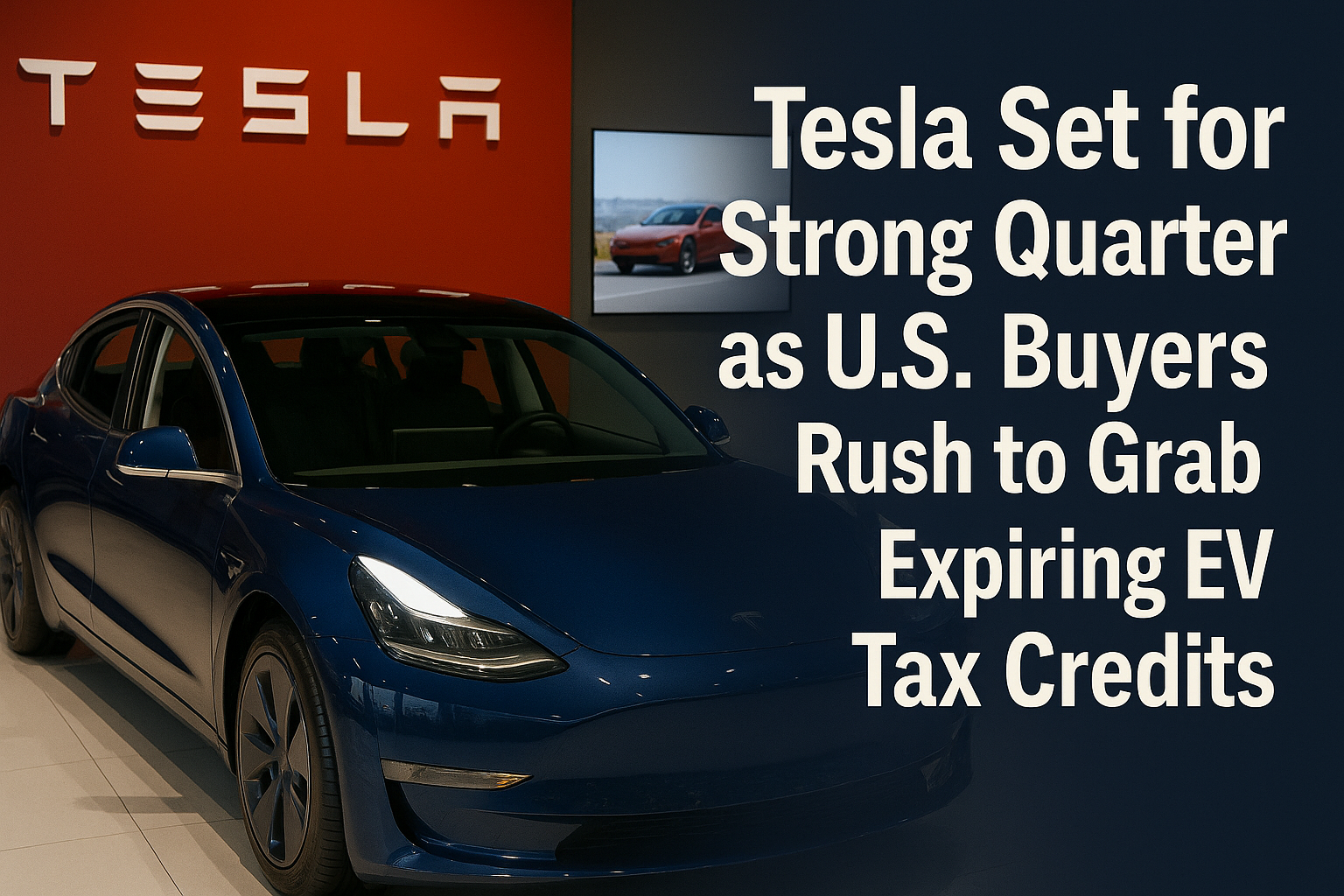As the clock ticks down on key U.S. federal electric-vehicle (EV) tax incentives, Tesla, Inc. is poised to post one of its strongest quarters of 2025. A surge of American buyers rushing to claim the $7,500 federal EV credit before its scheduled expiry has driven a wave of last-minute orders and deliveries — once again proving that policy can power demand as much as product innovation.
A Demand Surge Before the Deadline
According to sales-channel data and early dealer reports, Tesla’s U.S. deliveries spiked sharply through late Q3 2025, particularly for the Model 3 Rear-Wheel Drive and Model Y Long Range variants, which still qualify for the full credit under the Inflation Reduction Act (IRA).
Tesla’s website has shown extended delivery windows across several regions, and inventory levels in California and Texas have dropped to record lows. Analysts estimate that the company could deliver more than 480,000 vehicles globally in the quarter — a potential quarter-over-quarter increase of 12–15 percent.
“The tax-credit expiration created a perfect storm for Tesla,” said Evelyn Grant, senior analyst at Autonomy Research. “Buyers who were undecided suddenly realized they’d lose the rebate, and that urgency translated into instant conversions.”
Pricing Strategy Meets Policy Tailwinds
Tesla’s ability to capture this rush wasn’t accidental. Earlier this year, CEO Elon Musk implemented a targeted price-adjustment strategy across core models to maintain eligibility under the IRA’s price cap — $55,000 for sedans and $80,000 for SUVs.
By cutting prices and localizing battery sourcing to meet U.S. content requirements, Tesla kept its best-selling models within the incentive range, securing a competitive advantage as rivals such as Hyundai and Kia lost partial eligibility.
The result: a “policy-driven rally” in sales that may offset weaker demand in Europe and China, where EV subsidies have tightened and price competition remains fierce.
Balancing Short-Term Gains with Long-Term Pressure
While the short-term numbers look impressive, analysts caution that the post-credit landscape could bring volatility. Once the federal rebate expires, EV affordability may again become a constraint for middle-class buyers.
“Tesla will likely see a brief cooldown after December,” said Grant. “The challenge will be sustaining volume without the tax-credit boost — especially as new entrants compete aggressively on price.”
Nevertheless, Tesla’s cost advantage remains formidable. With Gigafactories in Texas, Berlin, and Shanghai achieving record output and production costs dropping an estimated $1,200 per vehicle year-over-year, the company is better positioned than most to weather fluctuations in consumer incentives.
New Models and Energy Expansion in Focus
To maintain momentum, Tesla plans to ramp up production of its next-generation compact EV in early 2026, aimed at the sub-$30,000 segment — a market Musk has called “the final frontier for mass adoption.”
At the same time, the company’s energy-storage division is quietly emerging as a growth engine. Tesla Energy’s Megapack deployments surged more than 45 percent in the past quarter, and its Powerwall 3 home-battery rollout has gained traction amid rising U.S. electricity costs.
“Tesla is evolving from an automaker into an energy ecosystem company,” noted Tom Rivers, managing partner at EV Insights Group. “Cars are still the anchor, but storage, software, and energy management will increasingly drive profits.”
Policy and Innovation Intertwined
The federal credit’s phase-out marks another turning point in Tesla’s journey — one that blends technological innovation with regulatory alignment. For over a decade, Tesla has leveraged government incentives to accelerate the EV transition, while continually pushing battery-efficiency and manufacturing frontiers.
Yet this quarter’s success reveals both sides of the equation: the strength of consumer demand for electric mobility and the vulnerability of that demand to shifting policy frameworks.
In summary:
Tesla’s record-setting quarter underscores the power of incentives in shaping EV adoption. While the end of tax credits may test near-term sales, the company’s deep cost efficiencies, expanding product line, and integrated energy vision suggest that Tesla is prepared not only to ride out the policy cycle — but to lead the next one.



